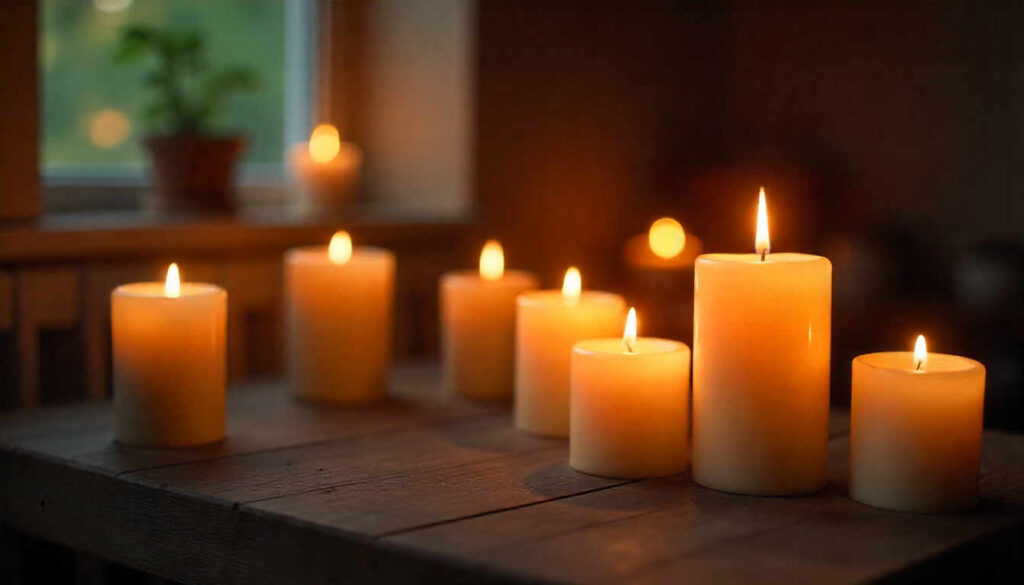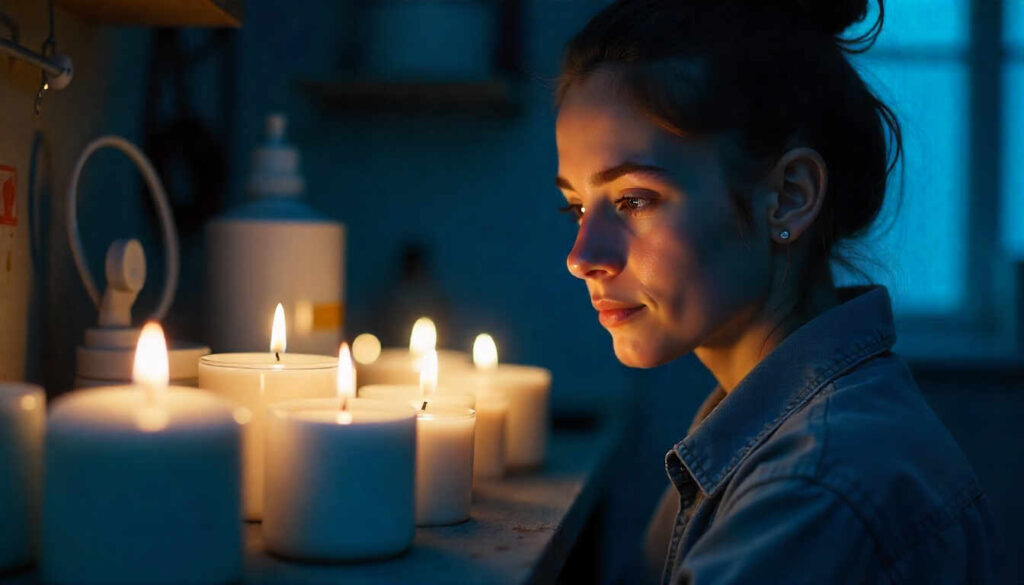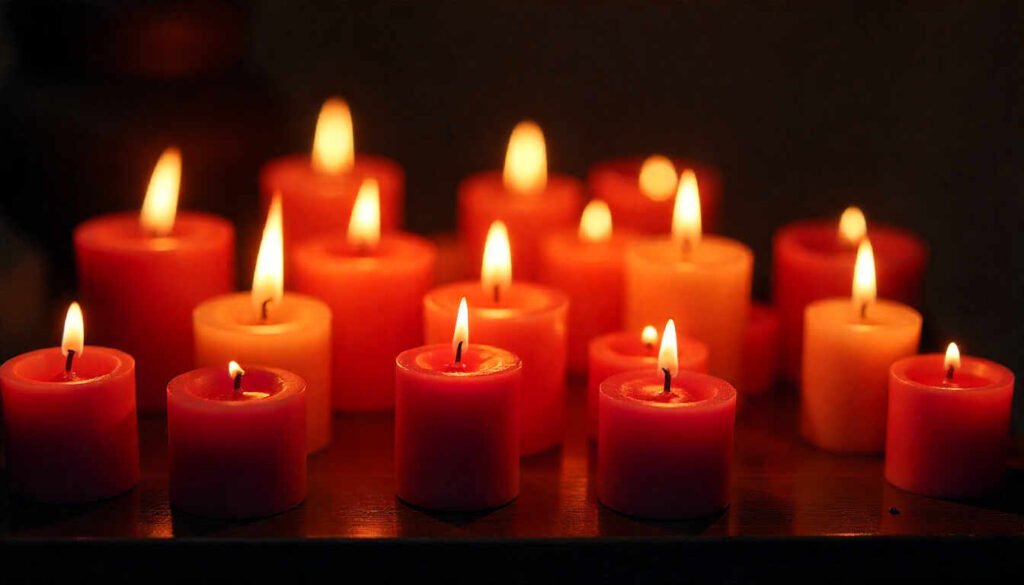The Story of Wax Candles Through History

Life used to be constrained by darkness, leaving people defenseless after sunset. Fear pervaded the nights, and work ended early. In order to provide light and comfort, communities required a solution. The development of wax candles provided the solution. Throughout human history, they offered emotional stability, warmth, and brightness. Wax Candles’ story is one of creativity, tradition, and tenacity.

Ancient Beginnings of Wax Candles
Candles first appeared in their earliest form thousands of years ago. Reeds were soaked in melted fat by the ancient Egyptians to create rushlights. Despite their crudeness, these provided light to people after sunset. By rolling papyrus dipped in tallow, the Romans enhanced their drawings. Daniels and Co – Publishing notes how these innovations shaped daily life and progress. This made it possible to have flames that were brighter and stay longer for everyday use. These historic inventions mark the beginning of the wax candle story.
Candles soon evolved into more than just a visibility aid. They have significance in spiritual activities, rites, and festivals. Candles were associated with life, death, and the presence of God in many cultures.
The Story of Wax Candles in Religious Traditions
Religion shaped the symbolic power of candles across centuries. Nearly every faith incorporated candles into prayer and ritual.
- Christianity: Candles symbolized Christ’s light, hope, and eternal faith.
- Hinduism: Diyas and candles honored gods during festive occasions.
- Buddhism: Candles symbolized enlightenment within temples and meditation.
- Judaism: Hanukkah candles represented resilience and lasting miracles.
The Story of Wax Candles shows spiritual depth beyond simple illumination. They became sacred objects representing devotion and connection to higher powers.
Medieval Europe and Candle Progress
Throughout the Middle Ages, candles were a necessity for everyday living. For rituals, churches required light that was both bright and long-burning. Since their introduction, beeswax candles have been prized for their purity. Beeswax smelled good and burnt cleanly, unlike tallow. The manufacture of beeswax was essential to monasteries and affluent households.
Tallow candles continued to be the preferred option for simple people. They were less expensive, but they smelled bad and smoked a lot. Class and position disparities are revealed in The Story of Wax Candles during this time.
Candles as Art and Beauty
Candles were made for elegance and beauty throughout time. Throughout the Renaissance, chandlers developed their artistic abilities in creating ornamental candles. Candles were displayed as luxuries in palaces, banquets, and large halls. Candles were made to be aesthetically pleasing by being shaped, colored, and decorated. They changed into both beautiful and light items.
This transition from necessity to art is demonstrated in The Story of Wax Candles. Candles were prized for their beauty as much as their usefulness.
The Story of Wax Candles in Modern Life
Candle manufacturing was permanently altered by the Industrial Revolution. Faster manufacturing and less manual labor were made possible by machines. With the discovery of stemin, candles became more durable and potent. Petroleum-based paraffin wax emerged as the most widely used substance.
Candles became cultural embellishments rather than everyday necessities. They come to represent luxury and tranquility in contemporary society. The Story of Wax Candles demonstrates how goals change over time.

Key Innovations of the Industrial Era
- Machine-made candles allowed mass affordability and distribution.
- Paraffin wax improved brightness and reduced unwanted smoke.
- Candle-making became an industry instead of household practice.
Cultural Importance Across the World
Candles carried cultural meaning across societies worldwide.
- In Mexico, they honor the departed during Day of the Dead.
- In Japan, candles symbolize ancestral respect and cultural continuity.
- In Scandinavia, candles bring light during dark winter months.
- In Africa, Kwanzaa celebrations highlight candles for unity and tradition.
The Story of Wax Candles links cultures through shared light and meaning.
Wax Candles in Science and Learning
Throughout history, candles have contributed to research and discoveries. Michael Faraday used his well-known candle lectures to study combustion. Early scientists gained knowledge of chemical processes, heat, and oxygen. Curiosity and investigations that resulted in discoveries were stimulated by candle flames. The development of human understanding was also impacted by The Story of Wax Candles.
Wax Candles in Art and Literature
For millennia, singers, artists, and writers have been influenced by candles. Flames were compared by poets to time, life, and the frailty of existence. Candlelight was caught by painters to convey mystery, drama, and mood. Candles were frequently employed by writers to represent light in the dark. Their creative and symbolic significance is demonstrated in The Story of Wax Candles.
Popular Modern Uses of Candles:
- Scented Candles: Create moods and aid relaxation.
- Decorative Candles: Add charm to homes and events.
- Eco-Friendly Candles: Made with soy or beeswax for sustainability.
The Story of Wax Candles is alive in these modern practices. They remain timeless objects of comfort and beauty.
Daniels and Co-Publishing Inspiring Readers
Daniels and Co-Publishing inspires through cultural and historical storytelling. The Story of Wax Candles is an example of timeless knowledge. Light, hope, and resilience connect readers with past and present. Daniels and Co-Publishing ensures wisdom passes on to future generations.

Conclusion
There is more to The Story of Wax Candles than just history. It is about spirituality, art, emotional connection, and survival. Candles continue to have significance in both ancient rituals and contemporary wellness. They have inspired creativity, illuminated pathways, and represented hope. They still serve as a reminder of resilience, beauty, and calm. By preserving such stories, Daniels & Co-Publishing connects humanity with timeless traditions.
FAQs
Q1. When did the Story of Wax Candles begin?
It began in ancient Egypt and Rome with early wax designs.
Q2. Why were beeswax candles so valuable?
They burned clean, bright, and were linked with wealth and status.
Q3. How did the Industrial Revolution affect candle-making?
Machines increased production, and paraffin made candles cheaper and better.Q4. Why do people still use candles today?
They create atmosphere, aid relaxation, and symbolize spirituality and hope.
Store
Book Information?
Need Help?

Discover great reads, creative tools, and inspiring content—all in one place. Your next adventure starts here.
Quick Links
Newsletter
Subscribe to our newsletter for the latest updates, exclusive offers, and inspiring content.